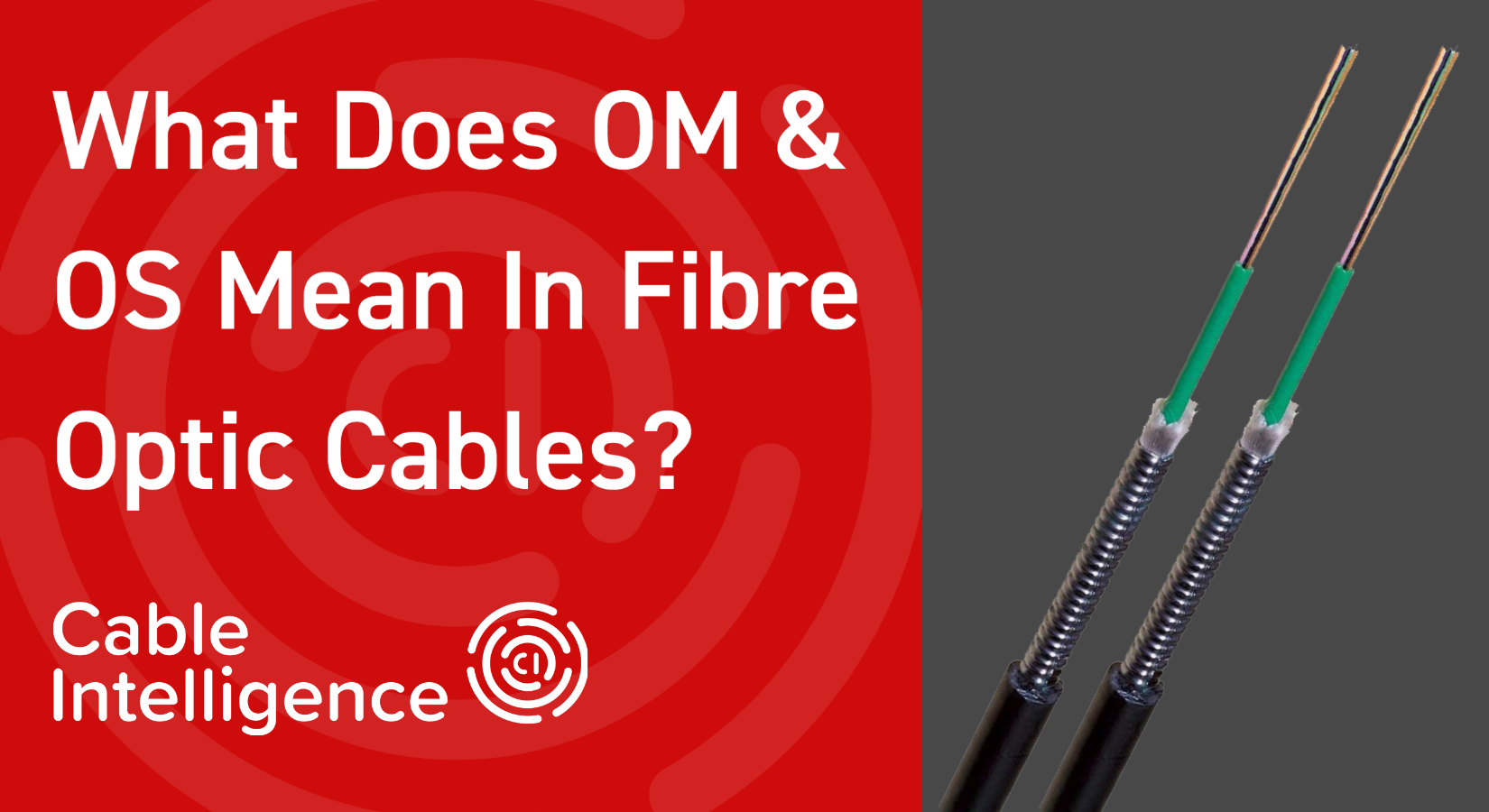Most people have heard of fibre optic cables now that the term is in the mainstream thanks to ISPs (Internet Service Providers). However, if you’re an installer looking to take your first step into the world of fibre, you need to know that not all fibre is the same – similar to how copper networking cable is split into different categories (Cat5, Cat6 etc.).
Some fibre optic cables are what’s called Single-mode, whereas others are Multi-mode and often you will see these categorised even further such as OM2, OM3 and so on. To first understand these categories, let’s explore the difference between Single-mode and Multi-mode.
Single-mode vs Multi-mode
While we’ve written a whole separate post about this topic, we’ll briefly outline the difference between the two here.
Single-mode fibre (SMF) features a small core. This is because there is only a single wavelength of light travelling down it. Due to this small core size, the amount of light reflections are decreased, meaning that the signal can travel further.
Multi-mode fibre (MMF) on the other hand has a much larger core, allowing multiple ‘modes’ of light to propagate. This increases the amount of reflections and means that more data is able to pass through the core at any given time. Of course, this does mean that the signal is able to travel less distance.
Generally speaking, if you need a long distance cable run, single-mode fibre is needed, whereas if you want to send more data down a shorter cable, you should opt for multi-mode fibre.
OM VS OS
So now we know what single-mode and multi-mode means, how does this get categorised into OM and OS?
OS stands for ‘Optical Single Mode’, whereas OM stands for ‘Optical Multi Mode’. The differences between each individual OM category are generally diameter, jacket colour, optical source and bandwidth.
OM2
OM2 Fibre uses an LED light source with a core size of 50 µm. It also supports 10 Gigabit ethernet applications up to a distance of 82 metres, but is usually used in 1 Gigabit ethernet scenarios.
OM3
Instead of LED as a light source, OM3 Fibre uses LOMMF, which stands for laser-optimised multi-mode fibre. It is more expensive, but provides higher bandwidths.
OM3 Fibre has a core size of 50 µm and supports 10 Gigabit Ethernet at a distance of up to 300 metres. 40 Gigabit and 100 Gigabit ethernet is also supported by OM3 up to 100 metres.
OM4
OM4 Fibre is very similar to OM3, however the difference is in the cable’s transmission distance – it’s a bit like Cat6 and Cat6a in copper. OM4 is able to provide 10 Gigabit Ethernet at up to 550m or 40/100GB at 150 metres when using an MPO/MTP connector. OM4 is completely backwards compatible with OM3.
OM5
OM5 Fibre shares the same 50 µm core as OM2, OM3 and OM4 and is backwards compatible with OM4. It is known as WBMMF (Wide Band Multi Mode Fibre) and is the latest development in fibre optic cables, designed for high bandwidth, short range applications.
It’s specification calls for at least four WDM (wavelength division multiplexing – where multiple wavelengths are used to send data over a single fibre) channels with a minimum speed of 28Gbps per channel.
OM5 can achieve up to 100Gbps at 150 metres.
OS2
While the above cables are multi-mode, OS2 Fibre is designed for single-mode applications where high speed and long distance is required. OS2 fibre cables can carry a signal up to 200 kilometres with transmission rates in excess of 10Gbps.

